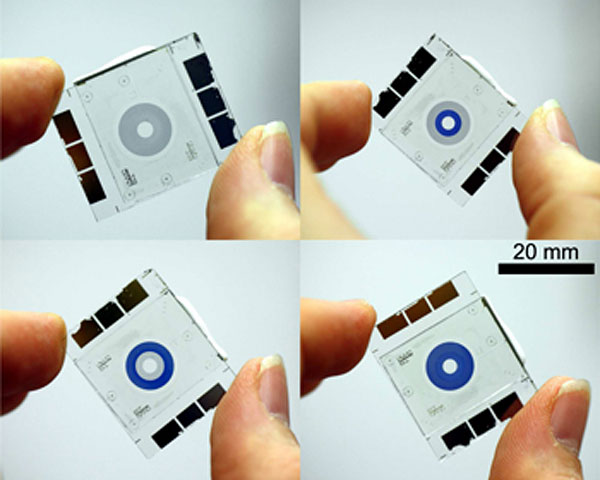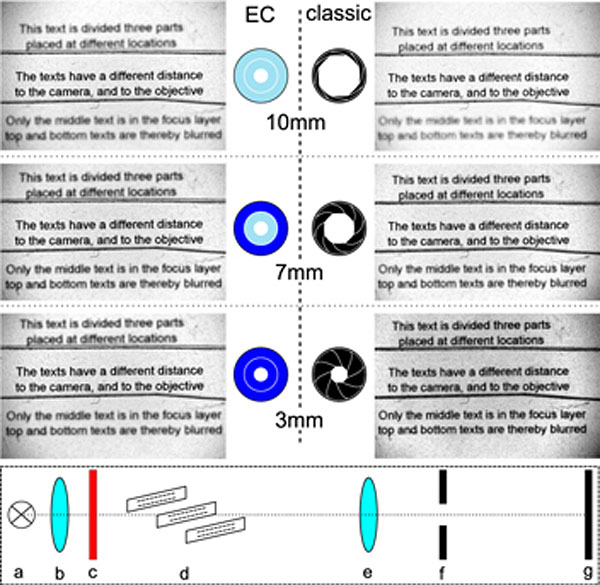The iris improved: German research promises better bokeh
posted Tuesday, June 24, 2014 at 4:47 PM EDT

If you've made the leap to a compact system camera, you've already done away with one outdated piece of technology -- the reflex mirror. But is there another dinosaur lurking within your lenses, ripe for a modern replacement? It's possible, if research at Germany's University of Kaiserslautern pans out.
A paper from Tobias Deutschmann, a Ph.D student at the research university, along with physics department head Professor Dr. E. Oesterschulze, proposes its replacement. A 300nm-thick layer of PEDOT (3,4-ethylenedioxythiophene) would form an electrochromic iris, with concentric segments that can be switched on or off using a current of just 20 μA at 1.5 V.

The design outlined in the paper would bring several advantages. So far, it's being targeted at use in smartphones, where space is at a premium, because it would require much less space than a mechanical aperture. It would also have very low power consumption, and could produce a near-perfectly round aperture for more attractive bokeh. And of course, there would be no failure-prone, noisy moving parts.
There are, as yet, some disadvantages too. Although the paper describes segment switching as "fast", it's currently on the order of two seconds for a segment to become transparent, or ten seconds for it to fully darken. Obviously, that's going to need to improve significantly for the design to become commercially viable. And even when darkened, the PEDOT material doesn't become fully opaque, so there's greater depth-of-field blurring for any given aperture size, as compared to a mechanical iris.

If these problems can be resolved, though, then the technology could make a big difference in the smartphone world, where lenses typically have fixed apertures for size reasons. And if the tech scales, we can't help but wonder what it could mean for higher-end cameras...
(via Petapixel)